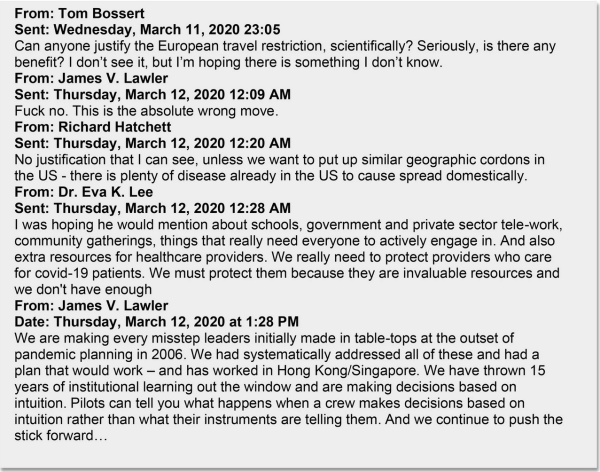NEW YORK TIMES: As the coronavirus emerged and headed toward the United States, an extraordinary conversation was hatched among an elite group of infectious disease doctors and medical experts in the federal government and academic institutions around the nation.
Red Dawn — a nod to the 1984 film with Patrick Swayze and Charlie Sheen — was the nickname for the email chain they built. Different threads in the chain were named Red Dawn Breaking, Red Dawn Rising, Red Dawn Breaking Bad and, as the situation grew more dire, Red Dawn Raging.
It was hosted by the chief medical officer at the Department of Homeland Security, Dr. Duane C. Caneva, starting in January with a small core of medical experts and friends that gradually grew to dozens.The “Red Dawn String,” Dr. Caneva said, was intended “to provide thoughts, concerns, raise issues, share information across various colleagues responding to Covid-19,” including medical experts and doctors from the Health and Human Services Department, the Centers for Disease Control and Prevention, the Homeland Security Department, the Veterans Affairs Department, the Pentagon and other federal agencies tracking the historic health emergency. […]
When Mr. Trump gave a speech to the nation on March 11 in which he announced limits on flights from Europe to the United States — but still no move to curb gatherings in cities where the virus had spread — the experts on the email chain grew angry and fearful. [PICTURED, ABOVE] Among those questioning Mr. Trump’s decision was Tom Bossert, who had previously served as Mr. Trump’s homeland security adviser. MORE
RELATED: Throughout January, as Mr. Trump repeatedly played down the seriousness of the virus and focused on other issues, an array of figures inside his government — from top White House advisers to experts deep in the cabinet departments and intelligence agencies — identified the threat, sounded alarms and made clear the need for aggressive action.The president, though, was slow to absorb the scale of the risk and to act accordingly, focusing instead on controlling the message, protecting gains in the economy and batting away warnings from senior officials. It was a problem, he said, that had come out of nowhere and could not have been foreseen.
Even after Mr. Trump took his first concrete action at the end of January — limiting travel from China — public health often had to compete with economic and political considerations in internal debates, slowing the path toward belated decisions to seek more money from Congress, obtain necessary supplies, address shortfalls in testing and ultimately move to keep much of the nation at home. MORE
RELATED: He Could Have Seen What Was Coming: Behind Trump’s Failure on the Virus

